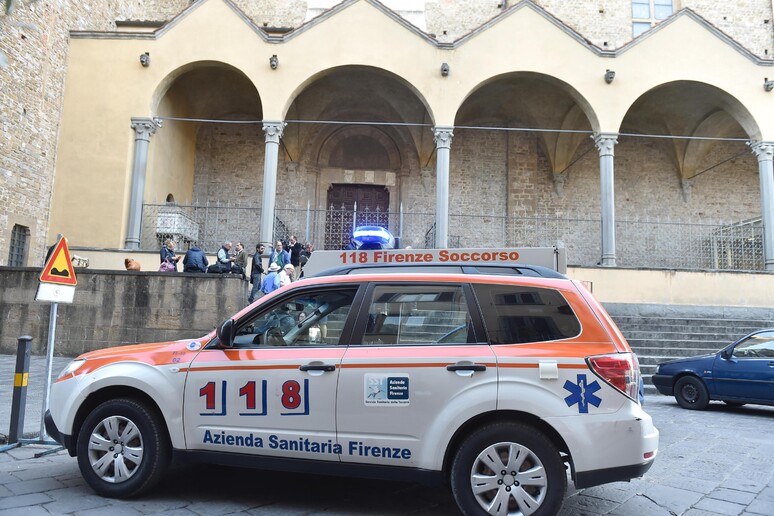A 52-year-old Spanish tourist
was killed Thursday after being struck by an "architectural
element" that fell off the top of a nave in Florence's Santa
Croce Basilica, sources said.
A fairly large piece of a capital came crashing down from 20
metres up and hit the man, Daniel Testor Schnell from Barcelona,
on the head, they said.
Medical teams rushed to the spot but were unable to revive
Schnell, who was visiting the church with his wife.
The piece of stone, a "peduccio" bolstering the base of
wooden structures, fell off the right-hand transept of the
basilica, a superintendency expert said.
The expert said there were no other known "critical elements"
in the church, which was "subject to periodic checks".
Schnell's body is still in the basilica where forensic and
other tests are being carried out, sources said.
Florence prosecutors opened a manslaughter probe in the case.
The probe is against person or persons unknown, for the
moment.
Culture Minister Dario Franceschini said the criminal probe
would find out how and why the stone fell off.
"There will be an investigation by magistrates to understand
how this dramatic fact happened and whether there are
responsibilities over maintenance," he said.
He added that he had immediately contacted his ministry to
establish the "chain of competence".
The president of the Opera di Santa Croce conservation
agency, Irene Sanesi, said "We are distraught and we express our
condolences to the victim's family.
"We are at the complete disposal of the authorities, to
understand what happened".
She went on: "it still is not known when the Basilica will be
able to reopen to the public."
Sanesi said: "there is a multi-year plan for maintenance,
restoration and prevention, drawn up in collaboration with the
civil protection department.
"For this very reason, for all the work that has been done in
a constant way over the years, we are really stunned and
bewildered by what has happened and we ask ourselves how it
could have happened".
A statement from the Opera said the basilica would remain
closed tomorrow in mourning.
Florence Mayor Diego Nardella tweeted: "Deep sorrow for the
accident in the Basilica di Santa Croce where the Spanish
tourist lost his life. Ministry technicians already at the
scene".
Rightwing populist Northern League leader Matteo Salvini said
"whoever is responsible should pay".
Florence Archbishop Cardinal Giuseppe Betori voiced
"condolences and sympathy" with the relatives of the dead
tourist.
The Basilica di Santa Croce (Basilica of the Holy Cross) is
one of the Tuscan capital's best-known churches.
The basilica is the principal Franciscan church in Florence,
Italy, and a minor basilica of the Roman Catholic Church.
It is situated on the Piazza di Santa Croce, about 800 metres
south-east of the Duomo.
The site, when first chosen, was in marshland outside the
city walls.
It is the burial place of some of the most illustrious
Italians, such as Michelangelo, Galileo, Machiavelli, the poet
Foscolo, the philosopher Gentile and the composer Rossini, thus
it is known also as the Temple of the Italian Glories
ALL RIGHTS RESERVED © Copyright ANSA











